Discover Low-Maintenance Gardening
Did you know a small garden can become your stress-free haven with just a few smart choices? You can transform your space using simple, practical ideas that cut down time spent
Contents
- 1 Opt for Drought-Tolerant Plants
- 2 Create a Gravel Garden Design
- 3 Use Raised Beds for Easy Management
- 4 Incorporate Evergreen Shrubs
- 5 Design With Hardscaping Elements
- 6 Choose Perennials Over Annuals
- 7 Install a Simple Water Feature
- 8 Utilize Container Gardening
- 9 Add Mulch to Reduce Weeding
- 10 Embrace Minimalist Layouts
Opt for Drought-Tolerant Plants
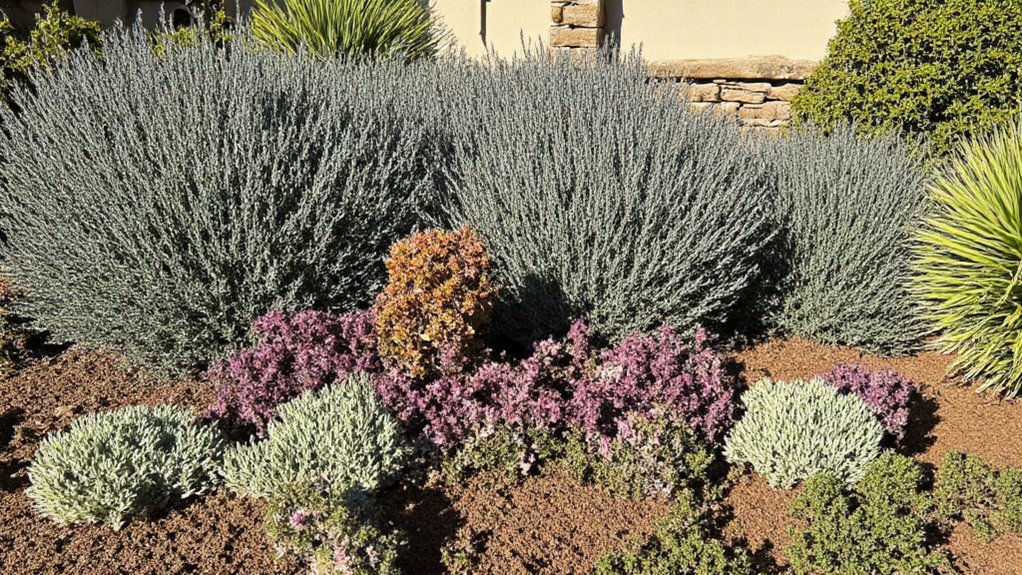
Opting for drought-tolerant plants is a smart choice for a low-maintenance small garden. These plants, often referred to as xerophytes, are adapted to survive with minimal water, making them ideal for busy gardeners or regions with limited rainfall. Examples include succulents like sedum and echeveria, as well as hardy perennials such as lavender, yarrow, and ornamental grasses. By choosing these species, you can greatly reduce the need for frequent watering and care.
Additionally, drought-tolerant plants often thrive in well-drained soil and full sun, conditions that are easy to create in a small garden space. Pairing them with mulch can further conserve moisture and suppress weeds, enhancing their low-maintenance appeal. This approach not only saves time and resources but also creates a resilient garden that can withstand dry spells without losing its charm.
Create a Gravel Garden Design
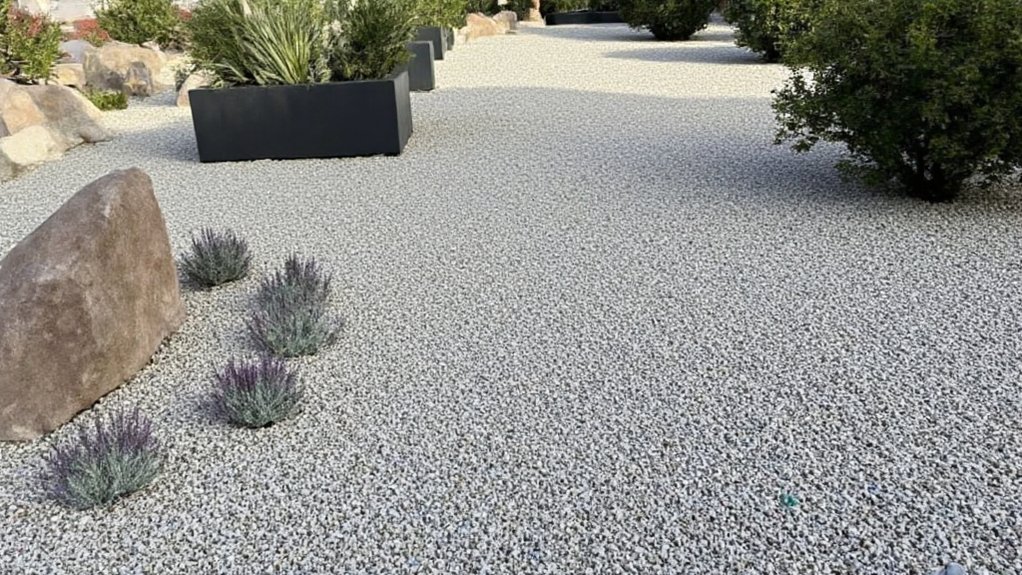
Creating a gravel garden design is an excellent choice for a low-maintenance small garden. Gravel gardens use stones or pebbles as the primary ground cover instead of traditional grass or soil-heavy beds, greatly reducing the need for watering, mowing, and weeding. Start by laying a weed-suppressing membrane over the soil to prevent unwanted growth, then spread a layer of gravel or decorative stones evenly across the area. This design not only minimizes upkeep but also provides a modern, clean aesthetic that can complement various garden styles.
To enhance the gravel garden, incorporate drought-tolerant plants like lavender, succulents, or ornamental grasses, which thrive in well-drained conditions and require minimal care. Position these plants strategically to create visual interest, and consider adding larger rocks or boulders for texture and structure. A gravel garden is ideal for small spaces as it maximizes usability while keeping maintenance to a minimum, allowing you to enjoy a stylish outdoor area with little effort.
Use Raised Beds for Easy Management
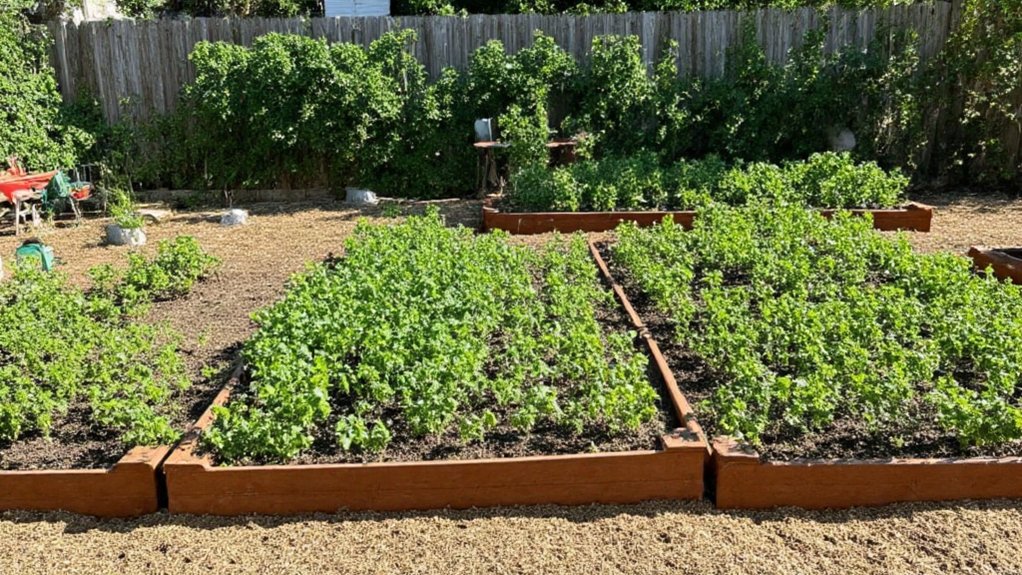
Raised beds are an excellent solution for creating a low-maintenance small garden. By elevating the planting area, they reduce the need to bend or kneel, making gardening tasks like planting, weeding, and harvesting much easier on the body. Additionally, raised beds allow for better control over soil quality, as you can fill them with a customized mix of compost and soil tailored to your plants’ needs, minimizing issues like poor drainage or compacted earth.
They also help in managing weeds and pests more effectively, as the contained space is easier to monitor and maintain. With a defined border, raised beds prevent soil erosion and keep the garden looking neat with minimal effort. This setup is ideal for small spaces, as it maximizes growing area while keeping maintenance simple and efficient.
Incorporate Evergreen Shrubs
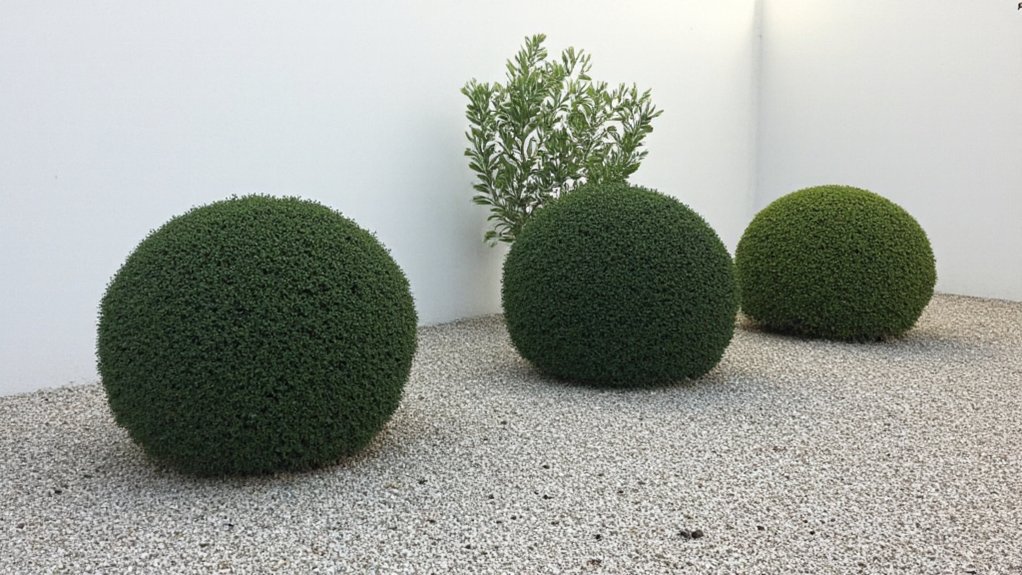
Incorporating evergreen shrubs into a small garden is a fantastic way to guarantee year-round interest with minimal upkeep. These plants retain their leaves throughout the seasons, providing consistent color and structure even in winter when other plants may die back. Varieties like boxwood, holly, or dwarf conifers are ideal for small spaces as they can be easily trimmed to maintain a neat shape and size, fitting well into borders or as standalone features.
Evergreen shrubs also act as a low-maintenance backbone for your garden, requiring little more than occasional pruning and basic care. They are often drought-tolerant once established, reducing the need for frequent watering, and many are hardy enough to withstand various weather conditions. By strategically placing these shrubs, you can create privacy screens, define garden zones, or add depth to your design without the constant need for replanting or seasonal replacements.
Design With Hardscaping Elements
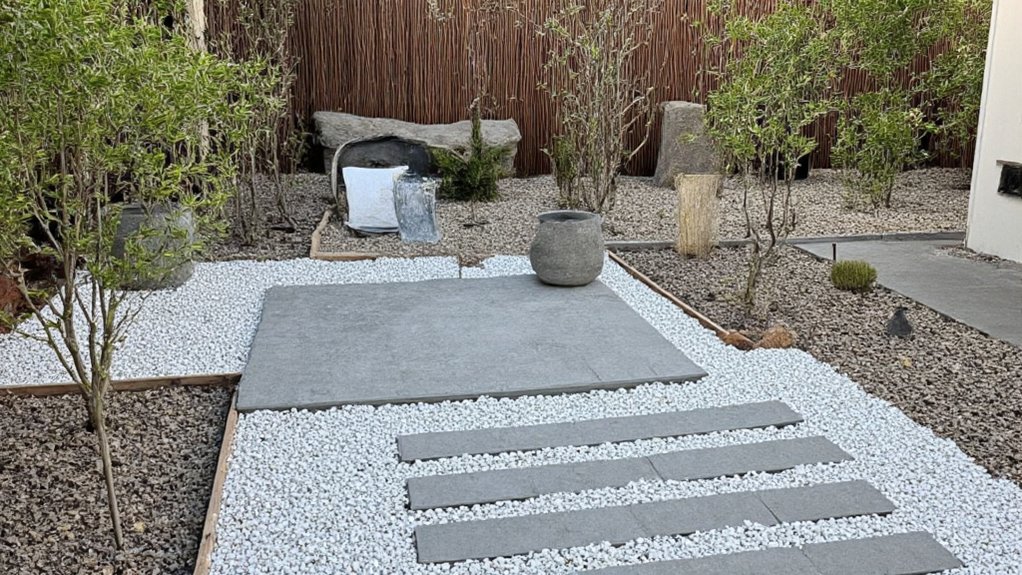
Hardscaping elements are a fantastic way to create a low-maintenance small garden by incorporating non-living features such as stone, gravel, concrete, or wood into the design. These materials require minimal upkeep compared to plants, as they don’t need watering, pruning, or fertilizing. By using hardscaping, you can define spaces, add structure, and reduce the areas that need regular care, making your garden both functional and visually appealing.
Consider adding elements like a small patio, gravel pathways, or stone borders to break up greenery and create a balanced look. Raised beds made of brick or wood can also help organize planting areas while minimizing weed growth. These features not only enhance the aesthetic of your small garden but also cut down on the time and effort needed for maintenance, allowing you to enjoy your outdoor space with ease.
Choose Perennials Over Annuals
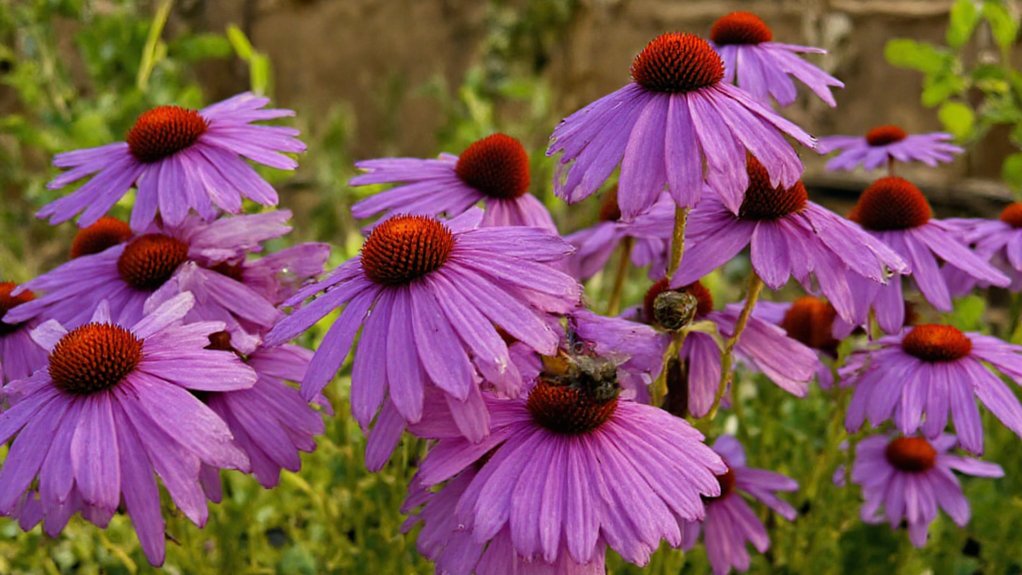
Opting for perennials over annuals is a smart choice for a low-maintenance small garden. Perennials are plants that return year after year, requiring less effort since you don’t need to replant them each season. Once established, they often need minimal care, thriving with basic watering and occasional pruning, which saves time and money compared to the constant replacement of annuals.
Additionally, perennials tend to develop deeper root systems, making them more drought-resistant and better adapted to local conditions over time. By selecting varieties suited to your climate and soil, such as daylilies, hostas, or lavender, you can create a garden that looks vibrant with little ongoing effort.
Install a Simple Water Feature

Installing a simple water feature can add a calming and elegant touch to a low-maintenance small garden. A small fountain, birdbath, or tabletop water feature requires minimal upkeep while providing the soothing sound of trickling water. These features can be easily placed in a corner or as a centerpiece, instantly enhancing the garden’s ambiance without demanding much space or effort.
Choose a self-contained, solar-powered water feature to eliminate the need for electrical wiring and reduce maintenance. Regularly check the water level and clean the feature occasionally to prevent algae buildup, ensuring it remains a beautiful and hassle-free addition to your garden.
Utilize Container Gardening

Container Gardening Gardening
Add Mulch to Reduce Weeding
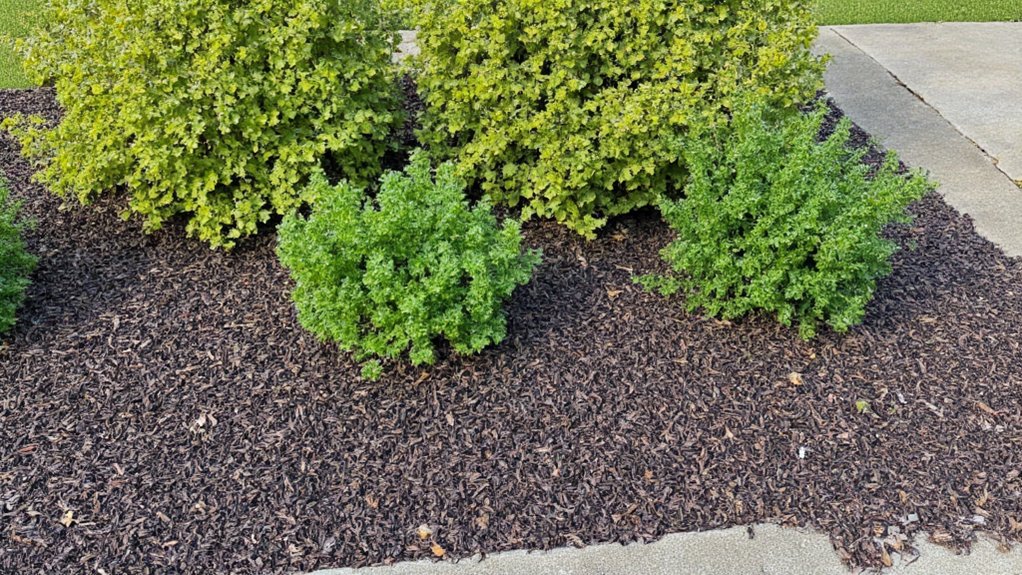
Adding mulch to your small garden is an effective way to reduce the time and effort spent on weeding. Mulch acts as a barrier, covering the soil and preventing weed seeds from germinating by blocking sunlight. It also helps retain soil moisture and regulate temperature, creating a healthier environment for your plants while minimizing unwanted growth.
Choose organic mulches like wood chips, bark, or straw, or opt for inorganic options such as gravel or landscape fabric, depending on your garden’s style and needs. Apply a 2- to 3-inch layer around plants, ensuring not to pile it directly against stems or trunks to avoid rot. This simple step can greatly cut down on maintenance, giving you more time to enjoy your garden.
Embrace Minimalist Layouts
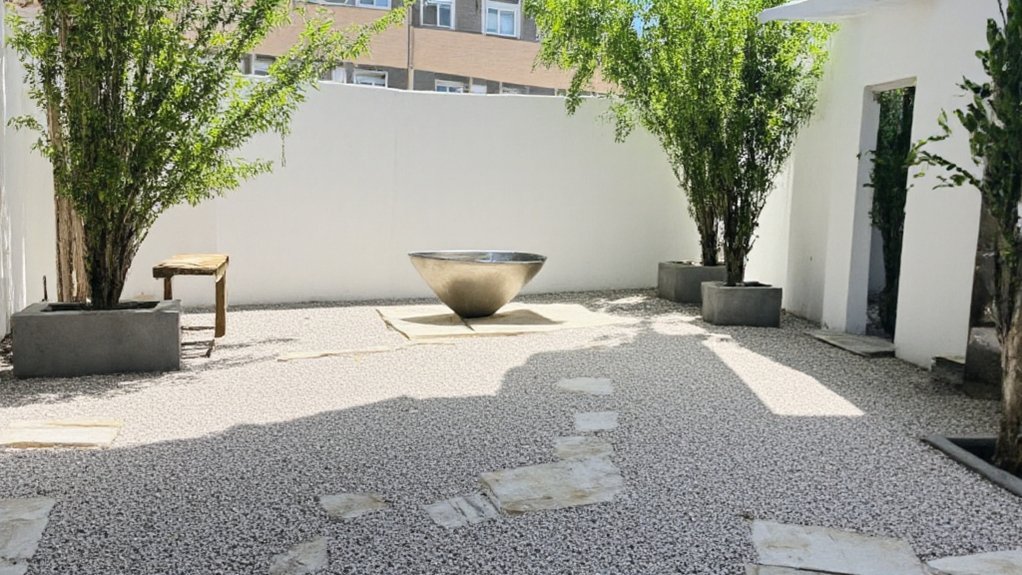
Embracing minimalist layouts is a key strategy for creating a low-maintenance small garden. This approach focuses on simplicity and functionality, using clean lines, uncluttered spaces, and a limited color palette to reduce the need for constant upkeep. By prioritizing essential elements like a small patio, a few well-placed plants, or a single focal point such as a water feature or sculpture, you can create a visually appealing garden without overwhelming yourself with maintenance tasks.
Minimalist layouts also often incorporate hardscaping elements like gravel, paving stones, or decking, which require little to no care compared to expansive lawns or intricate flower beds. These materials not only define the space but also minimize the areas that need watering, weeding, or mowing, allowing you to enjoy a stylish and serene garden with minimal effort.
